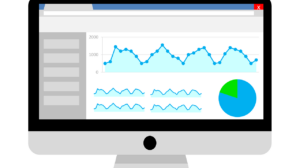The Google Quality Rater Guidelines received a new update in late July. For SEO experts and writers, things suddenly got a bit clearer.
That’s because Google shed some light on their process, as well as on what makes low quality content.
Let’s dig in!
What are the Google Quality Rater Guidelines?
I know you’ve heard all about bots and AI. But, lo and behold, Google also has manual raters. Yes, the human kind.
Their main responsibility is to evaluate the Google algorithms. They do so by testing them against different web pages.
When they check to see whether a page has low or high quality content, they always refer back to this document – the Quality Rater Guidelines.
However, you don’t have to think about these raters as IRS inspectors. They don’t make any decision on their own. They simply report all their findings back to Google.
They do, however, play an important part in algorithm creation and updating.
Let’s see what the update is this time!
The definition of low quality pages
In a nutshell, the update defines low quality pages as pages that “miss their mark”. In other words, they do not achieve what they set out to achieve.
The two main reasons why this happens are:
- There is not enough main content (MC) to meet the reader’s needs
- The author lacks the expertise on the topic
As I’ve been saying all along: write as much as you need to write to cover a topic. Forget about fitting the 300-word blog post norm. Write 3000 words if you need to. And, more importantly, be very careful when you hire SEO copywriters. Make sure that they know their stuff and that they won’t be stuffing the copy with keywords. Also, link to reputable websites to show you’ve done your research and your content can be trusted.
Other factors that raters are looking at:
- YMYL (Your Money, Your Life) pages without any information about the author are supposed to be rated lowest.
- The level of E-A-T (Experience, Authoritativeness, Trustworthiness)
- The quality of the MC is low
- There is not enough MC on the page
- Ads distract the reader
- The reputation of the author
- Pages that include potentially harmful links (malware, for instance) will be rated lowest
- Pages designed to trick people into clicking on a link or downloading something will be rated lowest
- The title of the MC is shocking or exaggerated
As you can easily depict, Google has moved even further in its war against clickbait content (see the last point) and untrustworthy, poor quality content in general.
Recommendations
Again, there is no need to panic. If you read the criteria Google announced, you understand that their goal is to make sure the users get the best and safest online experience.
So, unless you are running a clickbait gossip newspaper or plan on being dishonest or spreading malware, you should be OK. As long as you make sure that your content is on-point, not misleading and top quality.
Speaking of quality content – if you want to make sure that your content meets all these criteria and more, my team of awesome SEO writers and I would be happy to help. Check out our copywriting and content writing services and let’s talk!





